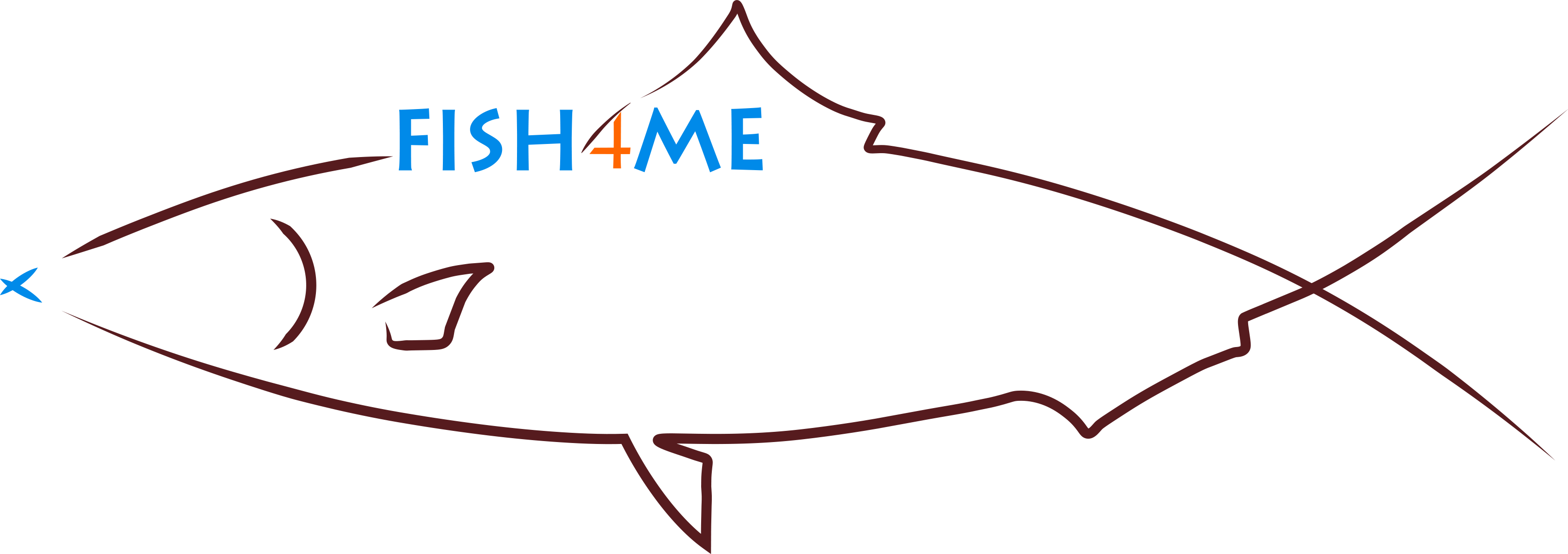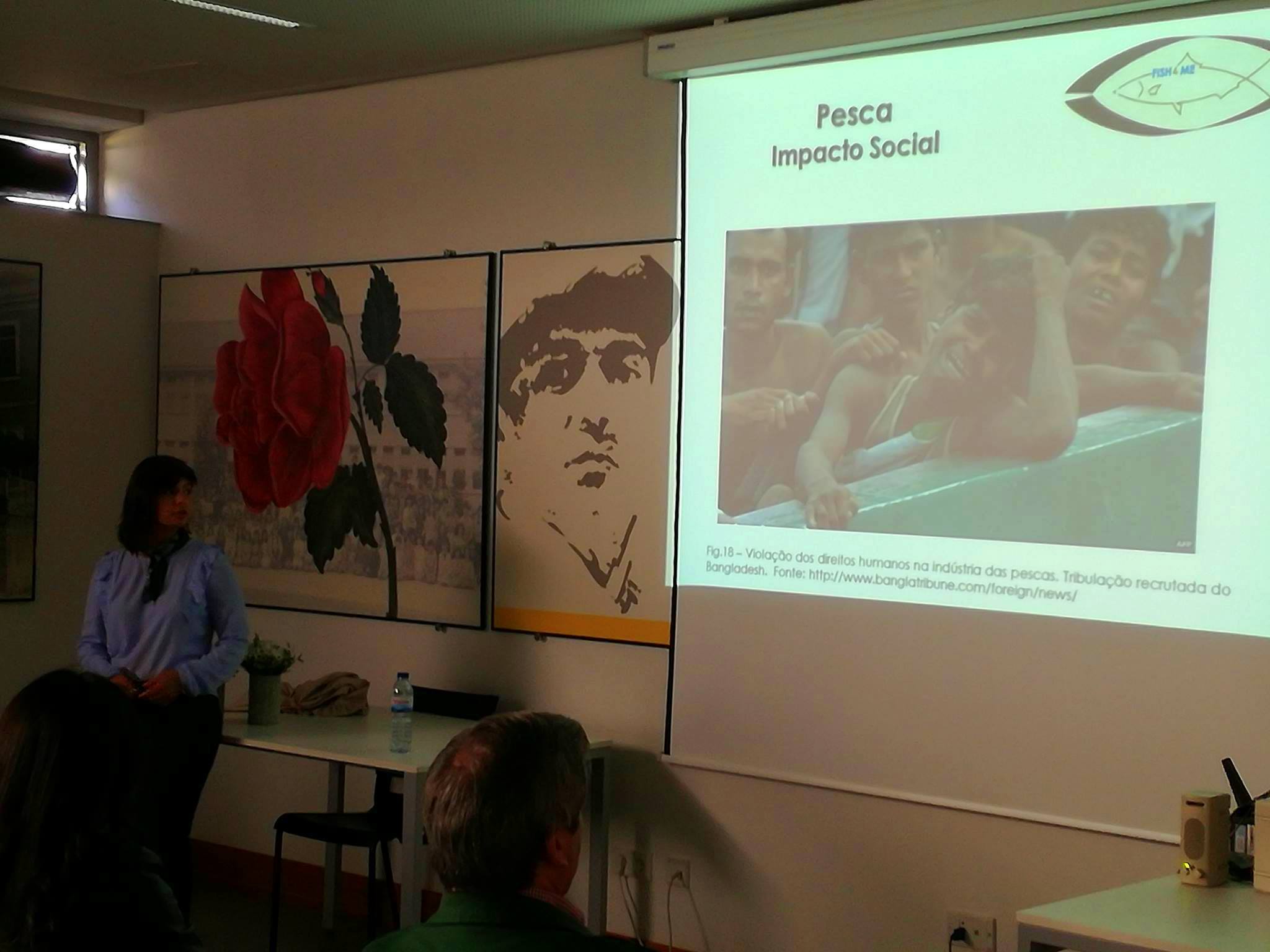Overfishing calls into question the balance of the marine trophic chain, as the commercial species and larger sizes of fish decreases, increasing the number of smaller fishes and jellyfish (predated by the extinct comercial species) that feed on herbivorous zooplankton (predators of microalgae). This is so significant that cause the non-existence of sufficient predators for microalgae, causing blooms that can be harmful to the ecosystem and to humans (Figure 1).
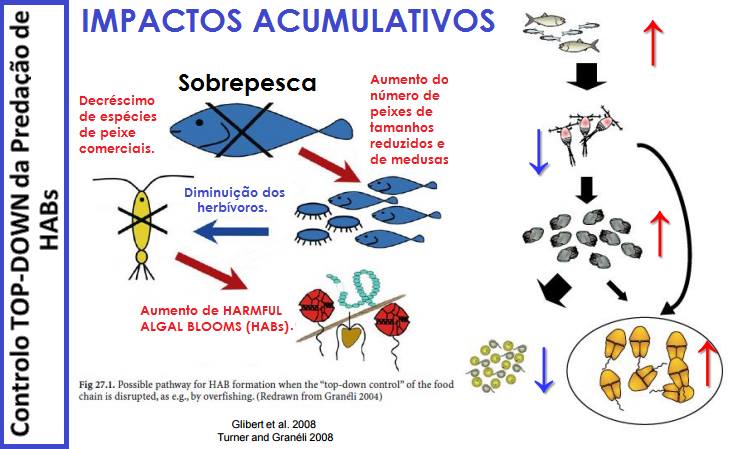
Figura 1. Cumulative impacts on marine trofic chain and proliferation of HABs. Image from Gilbert et al (2008) and Turner & Graneli (2008) of the A. Barbosa (2016) presentation about Plankton: Organisms and Processes-University of Algarve. Modified by: Rafaela Paulo Teixeira.
HABs (Harmful Algae Blooms) (Figure 2 and 3) are microalgae blooms that are harmful to the environment and consequently to the human health, due to some species produce toxins that can be absorved or acumulated in some marine organisms, impairing the trofic chain, albeit the number os species that are capable of doing this are reduced. The injestion of contaminates organisms also harms mammals, mussels, birds and its predators.
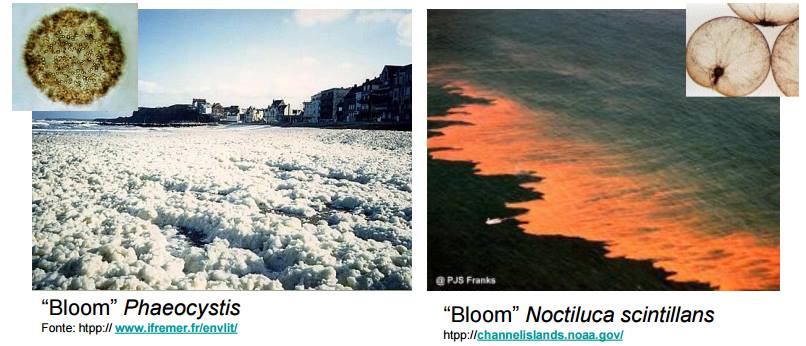
Figure 2. HABs of Phaetocystis (on the left) and Noctiluca scintillans (on the right) Image by A. Barbosa (2016) presentation of Plankton: Organisms and Processes-University of Algarve.
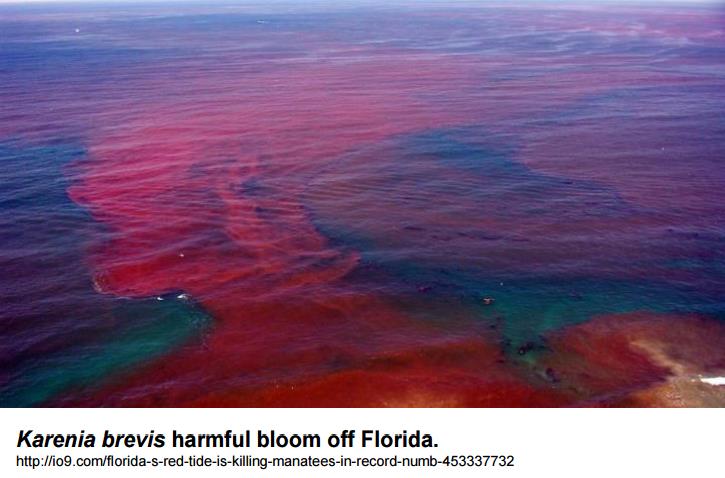
Figure 3. HAB of Karenia brevis in Florida. Image by A. Barbosa (2016) presentation of Plankton: Organisms and Processes-University of Algarve.
Many mussels that we consume, such as Mytilus edulis, the common mussel, use HABs as a source of food, resulting in mussel contamination. Some of it, if ingested by humans can cause paralysis, amnesia, diarrhea, and other serious problems depending on the type of organism that release these biotoxins. Those problems are caused by paralytic shellfish poisoning (PSP), amnesic shellfish poisoning (ASP) and diarrhetic shellfish poisoning (DSP), respectively.
The website https://www.ipma.pt/en/pescas/bivalves/index.jsp give as access to coastal production areas of mussels in Portugal and its toxicity.
However, there are non-harmful microalgae blooms that turns to be really importants to the environment, because it is a food source to predators, ergo it is important to fisheries and aquaculture; it increases the fotossintesis rate, increasing the oxigen level that released to the atmosphere; etc.
Citing Eriksson, 2011: “ A summary of available data on European marine waters shows that the total socio-economic impact of harmful algae blooms is at least 850 million euros per year. However, these results does not include all European countries and does not cover unreported incidents. The frequency of algae proliferation has intensified with eutrophication and, in Europe, the negative effects of harmful algae proliferation have increased significantly since the 1950s.”
Bibliography:
- BARBOSA, Ana (2016). Plâncton:Organismos e Processos-Padrões de distribuição do plâncton (Variabilidade Espacial). Universidade do Algarve.
- ERIKSSON, Britas Klemens (2011). PODE A SOBREPESCA FAVORECER A PROLIFERAÇÃO DE ALGAS? Direção-Geral das Políticas Internas da União. Departamento Temático B: POLÍTICAS ESTRUTURAIS E DE COESÃO-PESCAS. PDF disponível em: http://www.europarl.europa.eu/RegData/etudes/note/join/2011/474461/IPOL-PECH_NT(2011)474461_PT.pdf
- MOITA, Maria Teresa; PALMA, Ana Sofia & VILARINHO, Maria da Graça (2005). BLOOMS DE FITOPLÂNCTON NA COSTA PORTUGUESA. PDF disponível em: http://www.cienciaviva.pt/img/upload/BLOOMS%20DE%20FITOPL%C3%82NCTON%20NA%20COSTA%20PORTUGUESA.pdf
Webgraphy:
